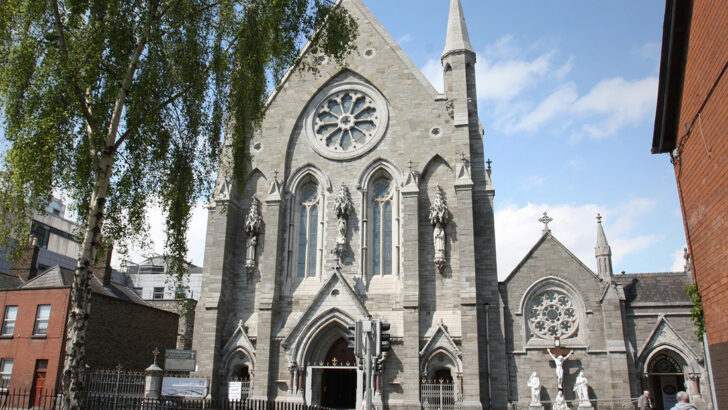Ireland and Poland are just at different points along the same path when it comes to genuine Catholic faith, writes Jason Osborne from Poland.
Life in Poland is a blast from the Catholic, Irish past in some ways. An example of this is that this week Poles enjoy a day off for Corpus Christi, whereas in Ireland we’ve just had the secular ‘June Bank Holiday’. While there’s a religious origin to our bank holiday, that is nowhere to be found these days, relegated to the depths of the Church as it is, hidden away from widespread view except for the odd public procession here and there, which are seen as quaint relics of Ireland past.
Bastion
Meanwhile, across the western world, Poland is often looked to, by many Catholics, as a last bastion of the Faith in Europe, along with Hungary. A prominent study earlier this year found that weekly or more frequent Mass attendance among self-identified Catholics was at 52% in Poland, making it the sixth highest out of the 36 countries with large Catholic populations surveyed.
The positive picture of Polish faith both these statistics and the civil presence of Catholicism in Poland paint is disputed by rival statistics and my own personal experience, however. According to figures published by the Church’s statistical institute in Poland (the Institute for Catholic Church Statistics (ISKK)) for 2021, which are the latest available, the proportion of Catholics in Poland attending Mass has fallen from 37% to 28% in two years.
The latest figures show that 28.3% attended Mass in 2021, which was down from 36.9% in 2019 (the survey wasn’t conducted in 2020 thanks to the pandemic). In 2011, that number stood at 40%; in 2001 at 46.8%; in 1991 at 47.6%; and in 1981 at 52.7%. My own experience gels with the latter, more pessimistic, set of statistics, unfortunately, as do indicators like the number of young men presenting for Polish seminaries falling considerably year on year.
This isn’t to say that Poland is bound to follow the Church in Ireland’s trajectory; there are a number of significant differences between the countries that could result in a different outcome yet. The language barrier, different histories, the gap in timing of the Church’s weakness and more could mean that the Church in Poland avoids falling to the lows the Church in Ireland is currently seeing.
Why do I bring this up at all in the Irish Catholic newspaper? To caution against the fatal mistake of believing that the grass is greener elsewhere. The recent Census 2022 data that revealed a 10% drop had taken place in the number of self-identifying Catholics between 2016’s 79% and last year’s 69% came as an enormous shock to many. I saw and heard lamentations about the plight of Catholic Faith in Ireland, and while there’s certainly a problem, it’s better viewed as an opportunity, difficult as that may be.
As Fr Ronald Rolheiser wrote in our paper some weeks back, “for too long we have enjoyed a situation of privilege, never a good thing for the Church. We generally live healthier as Christians in a time of dis-privilege than in a time of privilege, even if it isn’t as pleasant”. Is this to say that the Church should always be falling in numbers, losing its place in the public forum and facing increasing indifference, and in some quarters, hostility, from those who don’t adhere to its authority?
Of course not, and it’s the job of all Catholics to figure out how to make Catholicism not only acceptable again in public life, and appealing to those who don’t understand it yet, but the foundation upon which our future society will be constructed. What it is to say, though, is best left to the late Pope Benedict XVI, who outlined the future many of the Churches in Europe face, and the opportunity that lies at the heart of it:
Crisis
“From the crisis of today the Church of tomorrow will emerge — a Church that has lost much. She will become small and will have to start afresh more or less from the beginning. She will no longer be able to inhabit many of the edifices she built in prosperity. As the number of her adherents diminishes, so it will lose many of her social privileges. In contrast to an earlier age, it will be seen much more as a voluntary society, entered only by free decision…
“But in all of the changes at which one might guess, the Church will find her essence afresh and with full conviction in that which was always at her centre: faith in the triune God, in Jesus Christ, the Son of God made man, in the presence of the Spirit until the end of the world” (‘What will the Church look like in 2000?’, Joseph Ratzinger, 1969).
While the contraction continues in 2023, both in Ireland as evidenced by the latest stats, and gathers pace in Poland, despite the superficially Catholic sheen, we must realise the treasure we have in Christ and work from that, rather than from any trust or safety in temporal ebbs and flows of power and influence.


 A file photo shows an exterior view of St Mary of the Angels on Church Street in Dublin. Just over half of residents of Dublin now self-identify as Catholic, according to data released May 30, by the Central Statistics Office (CSO). Photo: OSV News photo/John McElroy
A file photo shows an exterior view of St Mary of the Angels on Church Street in Dublin. Just over half of residents of Dublin now self-identify as Catholic, according to data released May 30, by the Central Statistics Office (CSO). Photo: OSV News photo/John McElroy